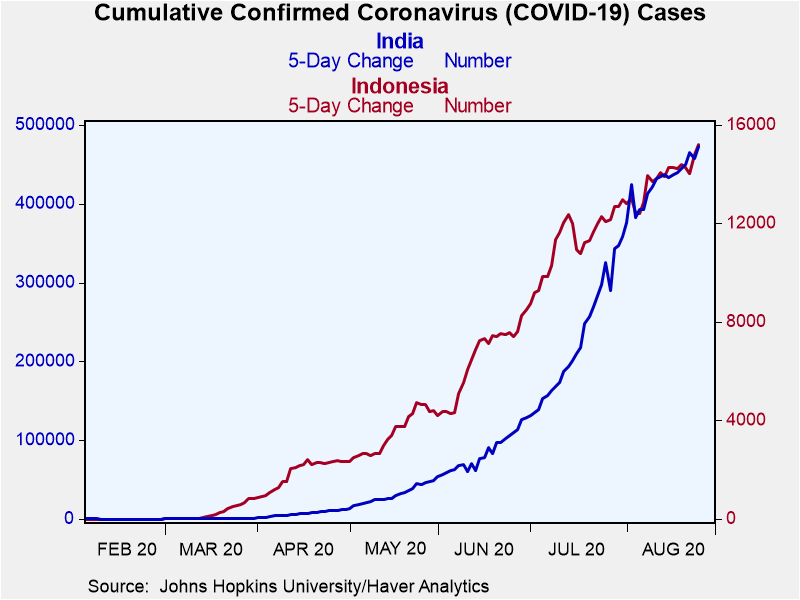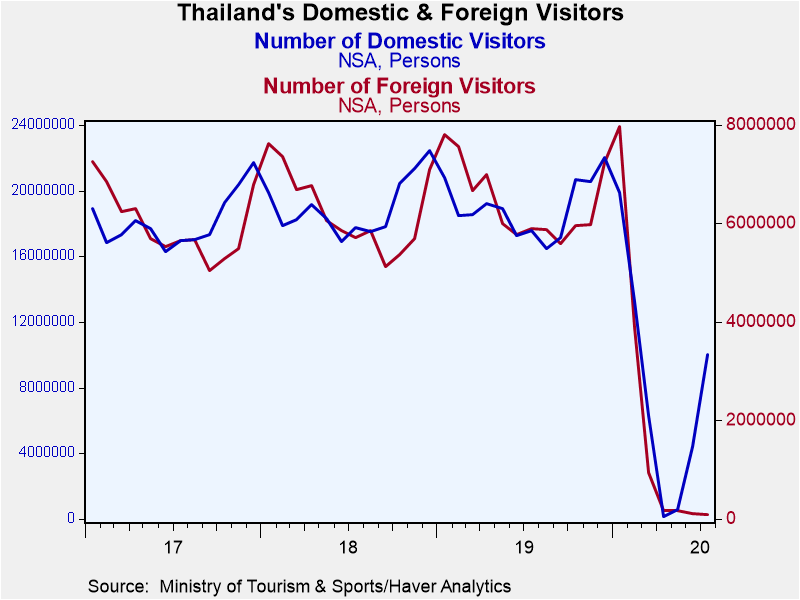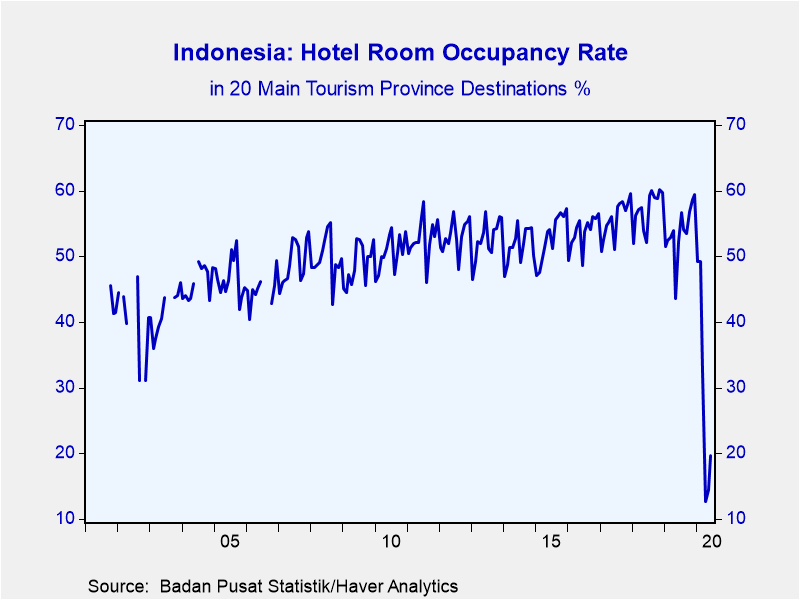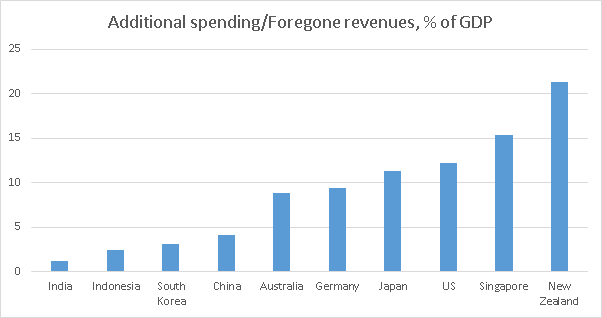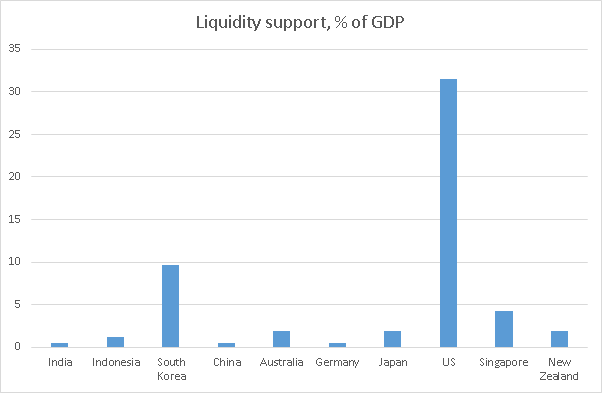 Global| Aug 27 2020
Global| Aug 27 2020Asia's De-globalisation Nightmare and Covid-19
by:Andrew Cates
|in:Viewpoints
Summary
Having been at the forefront of globalisation in the last few decades emerging economies in Asia are now under severe strain. That globalisation trend after all was already stalling before the Coronavirus made its mark on China. And [...]
Having been at the forefront of globalisation in the last few decades emerging economies in Asia are now under severe strain. That globalisation trend after all was already stalling before the Coronavirus made its mark on China. And that stalling was, in turn, already unfolding well before populist politicians proverbially began to throw stones of protectionism toward world trade.
This pre-protectionist phase of de-globalisation can be traced to a number of factors, both cyclical and structural. On the structural side these include a more inward looking China and its growing ability to draw more its domestic industrial capacity as opposed to global capacity to furnish its domestic demand. There had in addition through much of the last 10-15 years been some natural closure of relative unit wage cost disparities between the price of labour in Asia – and especially China - and the rest of the world making the commercial appeal of Asian offshoring less attractive to overseas producers. And some of those same producers were – at the margin – perhaps starting to deploy new manufacturing technologies (e.g. robotics and 3D printing) further undermining the labour-rich, capital-poor, and export-driven growth model that many of Asia's economies had hitherto been dependent on.
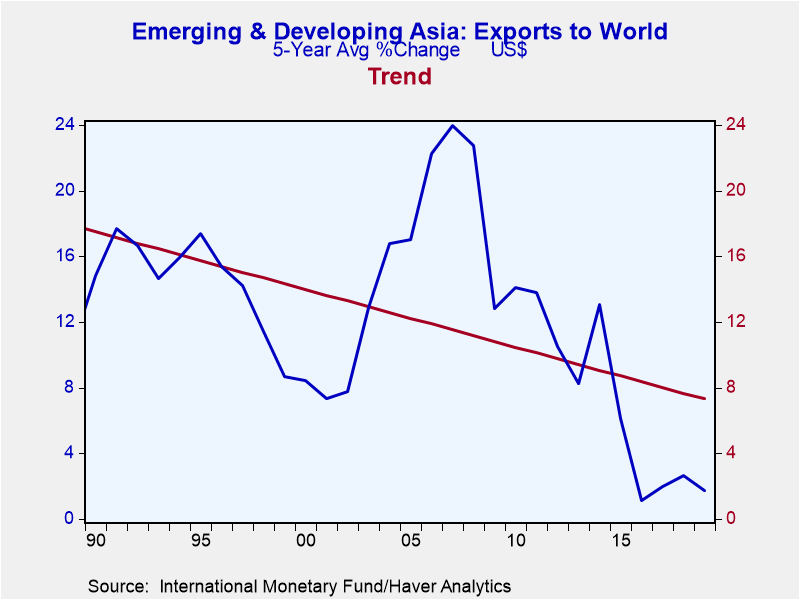 As evidence for this recent fragility of that growth model we need look no further than the aggregate export performance of Asia's economies. In the five years to 2019, for example, Asia's exports grew on average by less than 2%. This compares with the previous 25 years where exports have typically enjoyed an average 5-year growth rate of 14% (see first chart).
As evidence for this recent fragility of that growth model we need look no further than the aggregate export performance of Asia's economies. In the five years to 2019, for example, Asia's exports grew on average by less than 2%. This compares with the previous 25 years where exports have typically enjoyed an average 5-year growth rate of 14% (see first chart).
What now makes this underlying backdrop for Asia's export fabric so difficult of course is the curse of Covid-19 and the globalisation of this virus in particular. As many an epidemiologist has said, the virus knows no borders. Given the underlying exposure of Asia's economies to trade flows – in all its forms – this is concerning. There are a number of considerations here that are worth highlighting.
First there has been little relief when considering case numbers of the virus in Asia's large economies. While China was admittedly the first large economy to succumb to Covid-19 and has been relatively successful in stamping it out, the likes of India, Indonesia and South Korea have not been so fortunate. The latter has seemingly succumbed to a second wave in recent weeks. India and Indonesia in the meantime – highly populous Asian economies – and an important factor when thinking about transmission - have yet to see any relief from a first wave (see charts below). This matters for all sorts of reasons but one of the most obvious when thinking about economic contagion concerns confidence. Depressed confidence levels impact economic activity - almost like a virus - via their contagious impact on demand, income and trade flows.
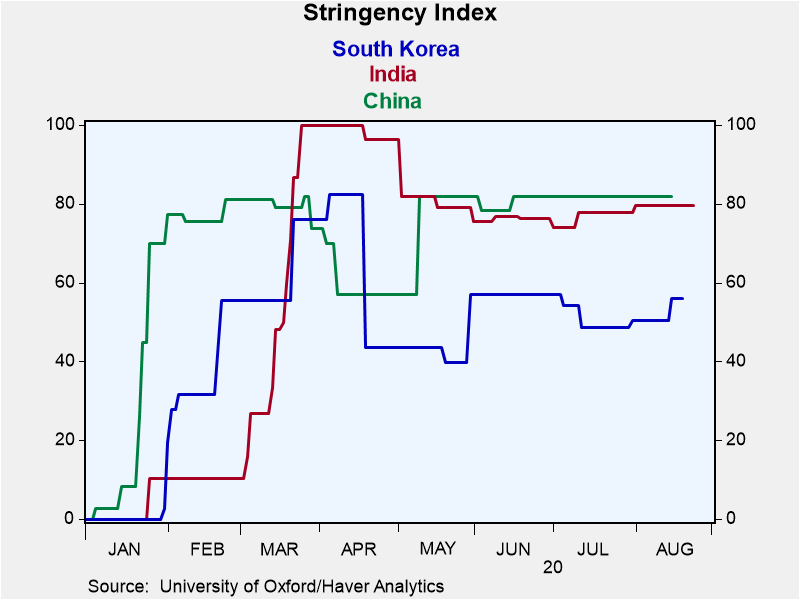 The second of our considerations concerns lockdowns and social distancing. If some of Asia's large economies are still in the grip of the virus policymakers will have little confidence in lightening up on their policies toward lockdowns. That's surely why indices that measure the stringency of these polices, plotted in the chart, are still highly restrictive in most of Asia's economies including in China. For the record these indices attempt to measure the restrictiveness of things like school closures, gatherings at public events, public transport closures and international travel controls. Their limited movement from already high levels in recent weeks suggests that important sectors of these economies are being severely hampered and will struggle to achieve anything close to ‘normal' rates of activity in the period immediately ahead.
The second of our considerations concerns lockdowns and social distancing. If some of Asia's large economies are still in the grip of the virus policymakers will have little confidence in lightening up on their policies toward lockdowns. That's surely why indices that measure the stringency of these polices, plotted in the chart, are still highly restrictive in most of Asia's economies including in China. For the record these indices attempt to measure the restrictiveness of things like school closures, gatherings at public events, public transport closures and international travel controls. Their limited movement from already high levels in recent weeks suggests that important sectors of these economies are being severely hampered and will struggle to achieve anything close to ‘normal' rates of activity in the period immediately ahead.
And this takes us to the third consideration that specifically concerns those restrictions on international travel, namely tourism. The tourism sector is extremely important for many of Asia's smaller economies but also for the likes of Thailand and Indonesia too, which are in the larger country category. The latest raft of high frequency data for tourist visitors and hotel occupancy rates in these countries remains extremely depressed as evidenced in the two charts below. As a further example of how severe these trends might be for the broader outlook the IMF has recently calculated that a decrease in tourism in Thailand due to Covid-19 could bring the country's overall exports down by 8 percentage points of GDP this year and have a direct net impact of about 6 percentage points of GDP on its current account balance.
The stance of economic policy is of course an important offset to the considerations that we cite above. In the realm of fiscal policy and liquidity support most countries have certainly instigated a number of measures in response to the virus that have alleviated economic and financial instability. In most of the countries that we have been highlighting in this commentary, however, the overall size of these measures is not that large – particularly in the realm of fiscal policy - when set against for example larger developed economies such as the US, Japan and Germany or even relative to the likes of smaller countries in a similar time zone such as Australia and New Zealand (see charts below).
Fiscal Policy Impulses, Q2 2020 Liquidity Support, Q2 2020
It's always tough to generalise about economic matters for regions as large and diverse as Asia. But as we have highlighted above there are some generic issues for its economies that point to a deeply troubling economic outlook. De-globalization trends had already undermined their economic fabric for a number of years. Covid-19 is now adding another layer of misery that will make the repair of that fabric very difficult.
It's true that the virus may not survive thanks to considerations such as a vaccine. It's true too that many of Asia's economies have successfully weathered many a storm in recent years including of course the crisis associated with SARs. Policymakers learnt important lessons from the latter which have arguably translated to a better handling of the current Covid crisis relative to, say, some European countries and the US.
However it's also worth recalling the punchline to an old Irish joke about a tourist in Ireland who asks one of the locals for directions to Dublin. The Irishman replies that if I were you I wouldn't start from here. The same could be said about many an Asian economy at present. They have arguably lost their way thanks to an unexpected de-globalization trend that has undermined their heavy presence in the world economy. And the Covid crisis is now naturally making any return to form extraordinarily challenging. They would clearly be far better off, however, if they did not have to instigate a restructuring of their economies from here!
Viewpoint commentaries are the opinions of the author and do not reflect the views of Haver Analytics.Andrew Cates
AuthorMore in Author Profile »Andy Cates joined Haver Analytics as a Senior Economist in 2020. Andy has more than 25 years of experience forecasting the global economic outlook and in assessing the implications for policy settings and financial markets. He has held various senior positions in London in a number of Investment Banks including as Head of Developed Markets Economics at Nomura and as Chief Eurozone Economist at RBS. These followed a spell of 21 years as Senior International Economist at UBS, 5 of which were spent in Singapore. Prior to his time in financial services Andy was a UK economist at HM Treasury in London holding positions in the domestic forecasting and macroeconomic modelling units. He has a BA in Economics from the University of York and an MSc in Economics and Econometrics from the University of Southampton.



